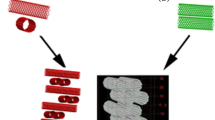Abstract:
Polyanilines belong to a family of electronic polymers. Due to a wide range of variable parameters in the synthesis of polyanalines, a variety of samples with different physical properties can be achieved. Different investigators have identified the degree of crystallinity for different varieties of polyanilines. They have classified them into two classes of emeraldine forms. In these structural investigations, the traditional “concept of the two phase system” was used for differentiating the crystalline phase. Recently, it has been shown that washing the emeraldine base (EB) by NMP or THF will establish two different X-ray patterns. The X-ray pattern of the sample washed with THF shows a limited number of Bragg lines superimposed on the broad diffuse halos. Other patterns only indicated broad diffuse halos. These experimental facts do not advocate the “two phase system model”, especially with scarce Bragg reflections. We have set-up an elegant prototype for X-ray diffractometry which allows us to obtain a high resolution X-ray pattern from polymers with coherent intrinsic backgrounds. Formally, this coherent background was excluded for polymer structural identification. Nevertheless, we have introduced a new method of separating the reflected lines from a coherent background. The interference functions F(K) of the coherent background were obtained applying this novel technique. The advantage of our method of separation is verified by comparing the background of F(K) with the F(K) of the sample washed with NMP. Fourier inversion is used to identify the short range order of the atoms responsible for the diffuse scattering. This result enabled us to choose a standard state of disorder in polymers. This standard state of randomness can be considered as the edge of disorder. By defining this reference state of randomness, it can be seen that the atomic arrangements of long and fast changing structural chains correspond best to the random array model rather than the two phase system model. The novel experiment and analysis technique presented here offer a possibility of application of structural studies to many common polymers, all of which have the characteristic of the diffuse halo underlying the diffraction lines.
Similar content being viewed by others
Author information
Authors and Affiliations
Additional information
Received: 7 May 1997 / Revised: 2 July 1998 / Accepted: 25 September 1998
Rights and permissions
About this article
Cite this article
Laridjani, M., Epstein, A. Edge of disorder . Eur. Phys. J. B 7, 585–597 (1999). https://doi.org/10.1007/s100510050651
Issue Date:
DOI: https://doi.org/10.1007/s100510050651




